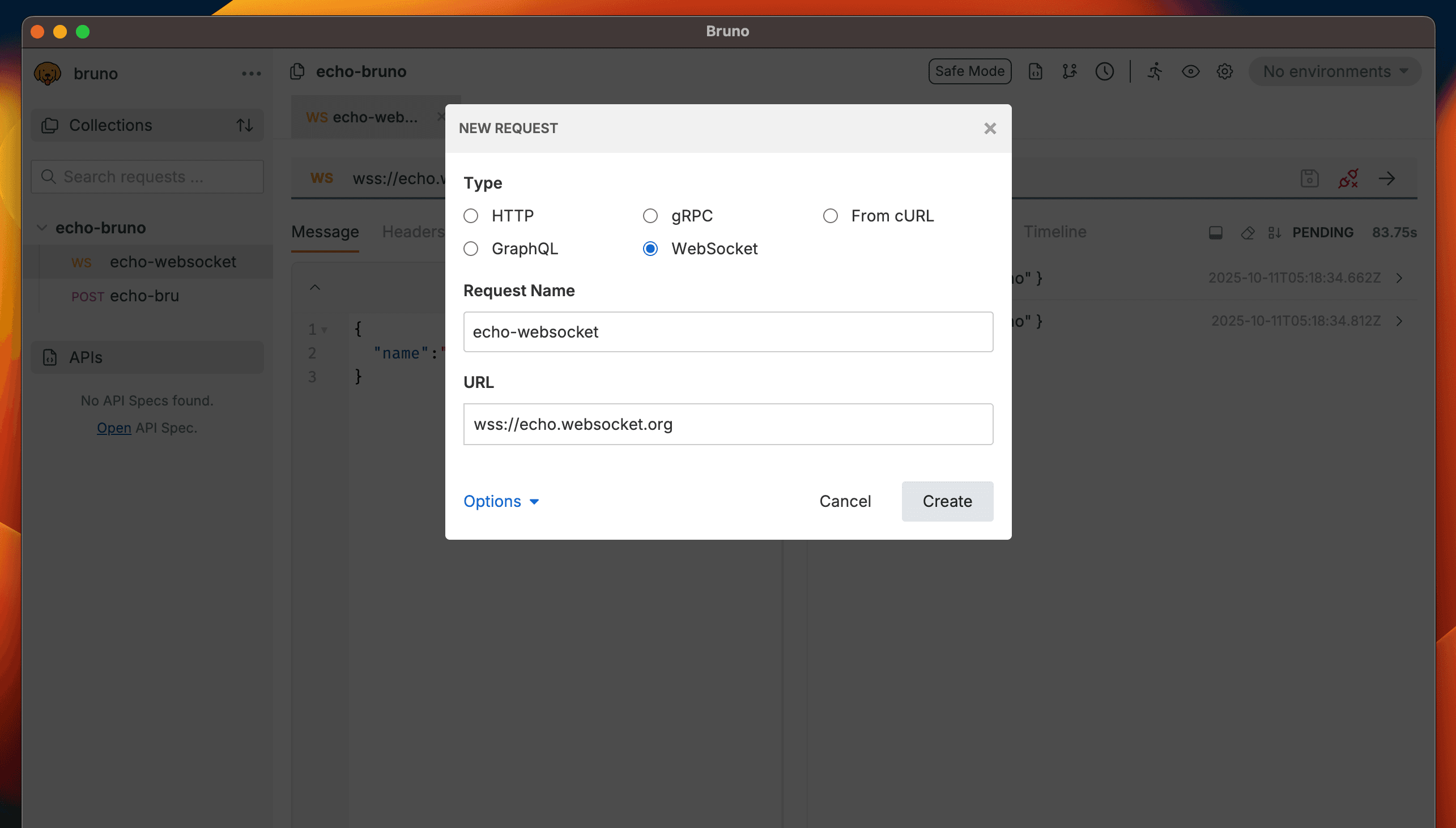Create WebSocket Request
Creating a WebSocket request in Bruno allows you to establish real-time connections and test bidirectional communication with WebSocket servers.
Creating a WebSocket Request
Step 1: Add New Request
- Open your collection in Bruno
- Right-click on the collection or folder where you want to add the request
- Select “New Request” from the context menu
- Choose “WebSocket” as the request type

Step 2: Configure WebSocket URL
- Enter the WebSocket URL in the address bar
- Use
ws://for unsecured connections - Use
wss://for secured connections (recommended for production)
- Use
Example URLs:
wss://echo.websocket.orgStep 3: Configure Headers
- Click the Headers tab
- Add custom headers as needed:
- Authorization: Bearer tokens, API keys
- Custom Headers: Any additional metadata
- User-Agent: Custom user agent strings
Common Headers:
Authorization: Bearer your-token-here
X-API-Key: your-api-key
User-Agent: Bruno-WebSocket-ClientStep 4: Set Connection Options
- Click the Settings tab
- Configure connection settings:
Connection Timeout
- Set the maximum time to wait for connection establishment
- Default: 30 seconds
- Range: 1-300 seconds
Auto-reconnect
- Enable automatic reconnection on connection loss
- Useful for testing resilient WebSocket implementations

Step 5: Configure Subprotocols (Optional)
Bruno supports WebSocket subprotocols, allowing you to specify the application-level protocol to use over the WebSocket connection.
Setting a Subprotocol
WebSocket subprotocols enable your client to specify which protocol variant it wants to use. To set a subprotocol in Bruno:
- Add the
Sec-WebSocket-Protocolheader in the Headers tab - Specify one or multiple subprotocols
Example:
Sec-WebSocket-Protocol: mqtt, wampSetting WebSocket Version
You can specify the WebSocket protocol version using the Sec-WebSocket-Version header. This is useful when testing compatibility with servers that support multiple WebSocket versions:
Sec-WebSocket-Version: 13WebSocket protocol version 13 (RFC 6455) is the current standard. Most modern servers use this version by default.
Server Rejections
If the server doesn’t support the requested subprotocol or version:
- The connection will be rejected
- You’ll see a 400 Bad Request response
- Check the response details to understand why the server rejected the connection
Advanced Header Overrides
Bruno allows you to override other Sec-WebSocket-* headers if needed for testing specific scenarios:
Sec-WebSocket-Key: Custom key for handshake (auto-generated by default)Sec-WebSocket-Extensions: Specify compression or other extensions
Simply add these headers in the Headers tab like any other custom header.